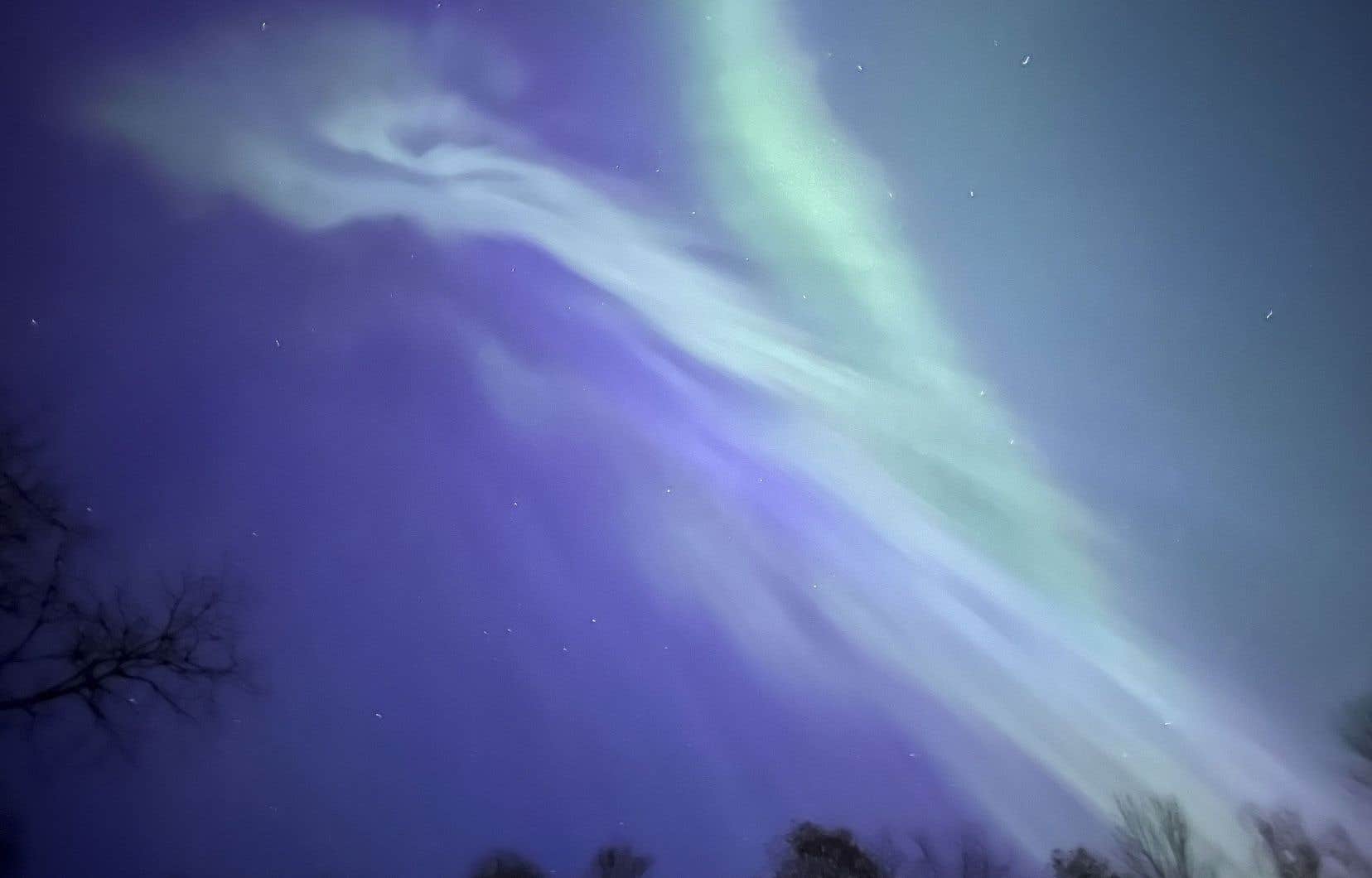Three weeks after dazzling young and old, the Northern Lights could make a return to the skies of Quebec this weekend. Space Weather Canada issued a major geomagnetic storm watch on Friday that will continue until Saturday. The episode will certainly be less intense than the solar storm that set the sky ablaze for two nights in mid-May, but it could still be visible in southern Quebec. The duty discussed it with Robert Lamontagne, an astrophysicist affiliated with the University of Montreal.
Will there be Northern Lights?
As with the weather on the surface of the globe, it is possible to predict conditions conducive to the appearance of the Northern Lights. To achieve this, scientists use instruments to observe the formation of flares on the surface of the Sun. These solar storms project particles charged with electricity into space which give rise to the luminous phenomenon called “aurora borealis” when they come into contact with the gases of the Earth’s upper atmosphere.
Such an eruption occurred on our star on May 29. It is the particles coming from this storm which will animate the sky in the coming nights. “Light takes only eight minutes to cross the distance between the Sun and Earth, but the electrically charged particles that produce the northern lights take between one and five days to do so, depending on the power of the eruption. That’s why we can do a little weather forecasting, we can see the storm coming in advance, in a way,” explains Robert Lamontagne.
The power and size of the eruption allows experts to predict the intensity of the aurora. The National Oceanic and Atmospheric Administration of the United States, NOAA, describes the solar storm observed a few days ago as “moderate”.
Will they be visible in Quebec?
The probabilities are excellent for the north of the province, and particularly for Nunavik, but they are lower for the rest of the territory. According to the astrophysicist, the auroras could extend to central and southern Quebec around midnight Friday, and possibly Saturday at the same time.
But we should not expect a cosmic ballet as impressive as that of May 10 and 11. “The auroras will certainly be less bright, and it will be more difficult to distinguish colors like purple, pink and orange, as we were able to do last time. If we see something, it will be more faintly luminous, probably whitish and greenish, nothing more,” specifies Robert Lamontagne.
This new electromagnetic episode will also be more restricted in the terrestrial sky. “I would be very surprised if it covered the entire sky like it did three weeks ago. This will probably be located towards the northern horizon. There will be nothing on the southern horizon, unless there is a small miracle. »
How to properly observe the auroras?
Three elements can harm the observation of the Northern Lights: clouds, the presence of the Moon and light pollution.
In the first two cases, luck is on the side of astronomy enthusiasts. As for the weather, generally clear skies are forecast across Quebec for the night from Friday to Saturday. As for the Moon, it is currently in its last crescent: it rises later at night and reflects less light. A full moon, for example, could prevent the view of the Northern Lights.
Concerning light pollution, it is recommended to move away from large urban centers to escape it. If the mid-May solar flare could have been observed in the heart of downtown Montreal due to its great power, this weekend’s episode will be much more limited.
And for the rest of the year?
The Sun follows a cycle of activity that waxes and wanes over a period of 11 years. The star is currently in an ascending phase of its cycle, which means more solar spots and flares. These disturbances on the surface of the star can also be observed safely using glasses like those that allowed us to watch the most recent solar eclipse.
“This solar cycle should peak at the end of this year and the beginning of 2025. We are almost at maximum activity of the Sun,” confirms the astrophysicist. For this year and next year, the probability of solar flares is higher, and therefore the probability of seeing the Northern Lights too. There are no guarantees that we will see them every day, and we cannot make predictions beyond a few days, but the conditions are favorable. »
Could this increase in solar activity disrupt electrical and telecommunications networks as in 1989, when a solar storm caused a major outage within the Hydro-Québec network? “We have learned a lot over the past 30-40 years,” explains Robert Lamontagne. Even though there is a very high level of activity on the Sun, our electricity transmission systems are quite resilient and outages are less likely, although not impossible. »
